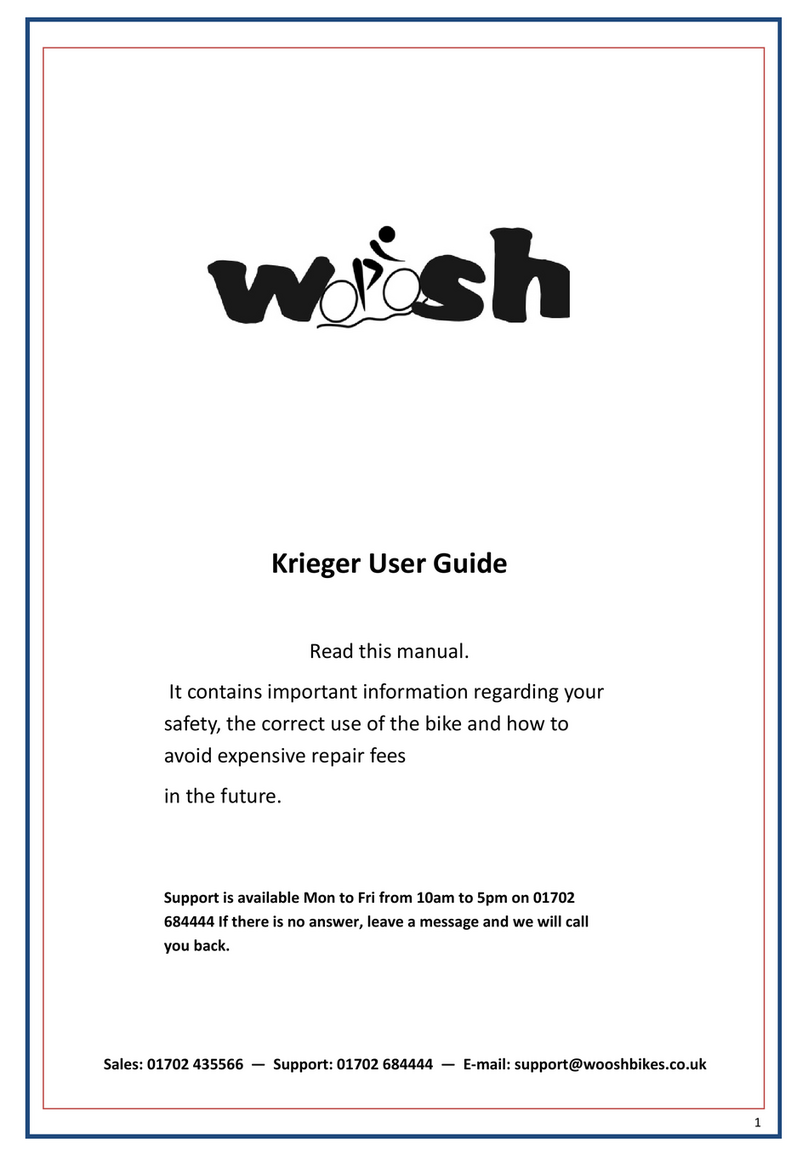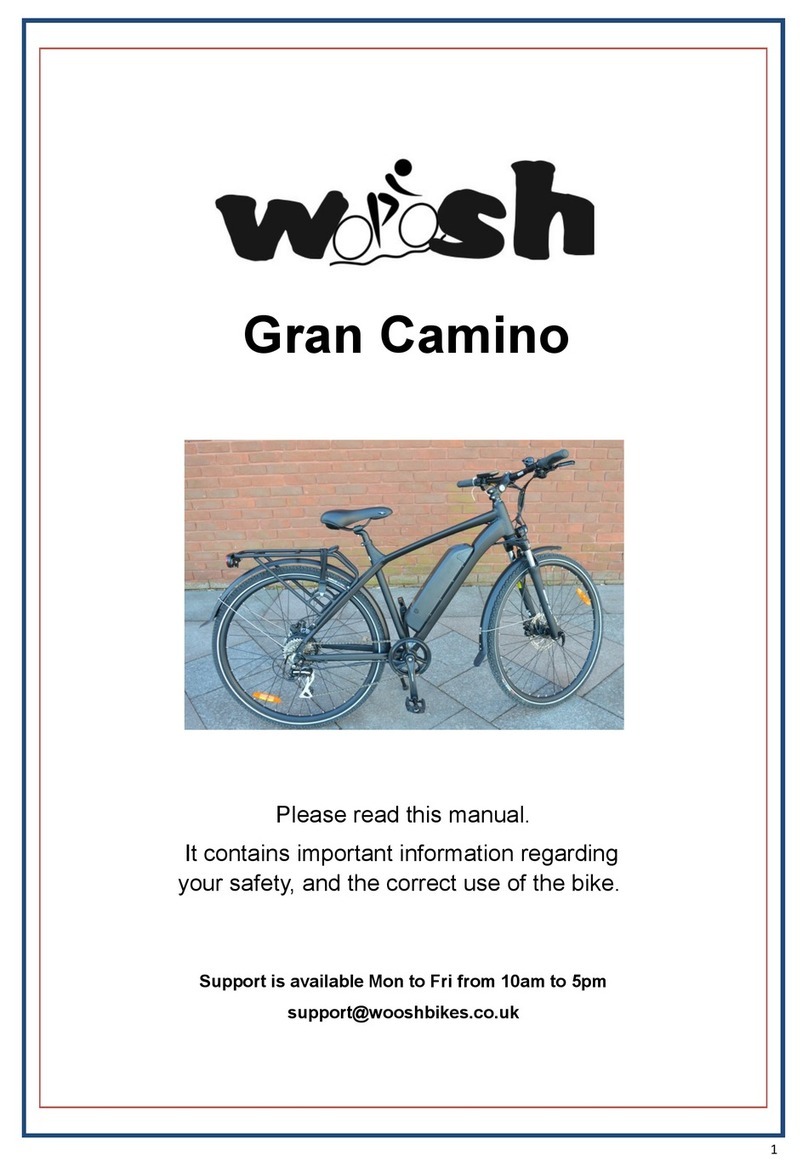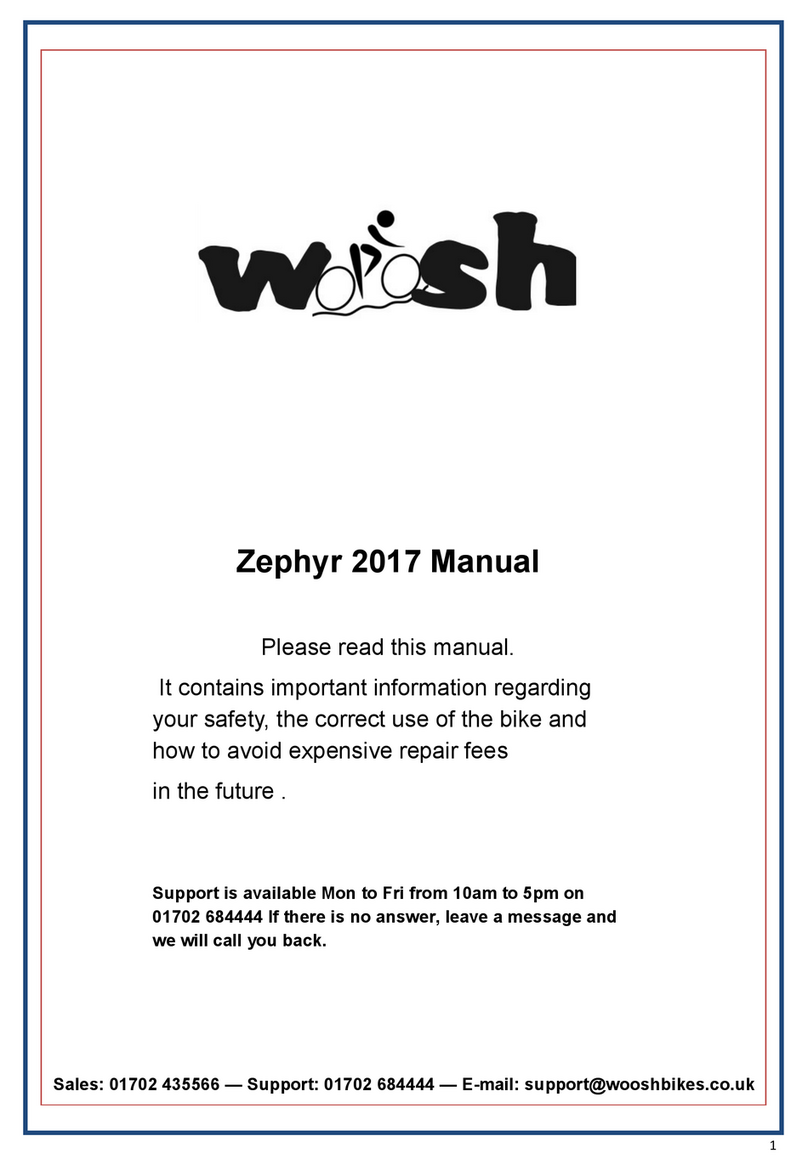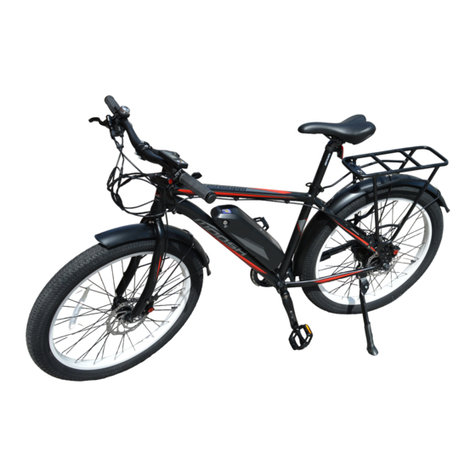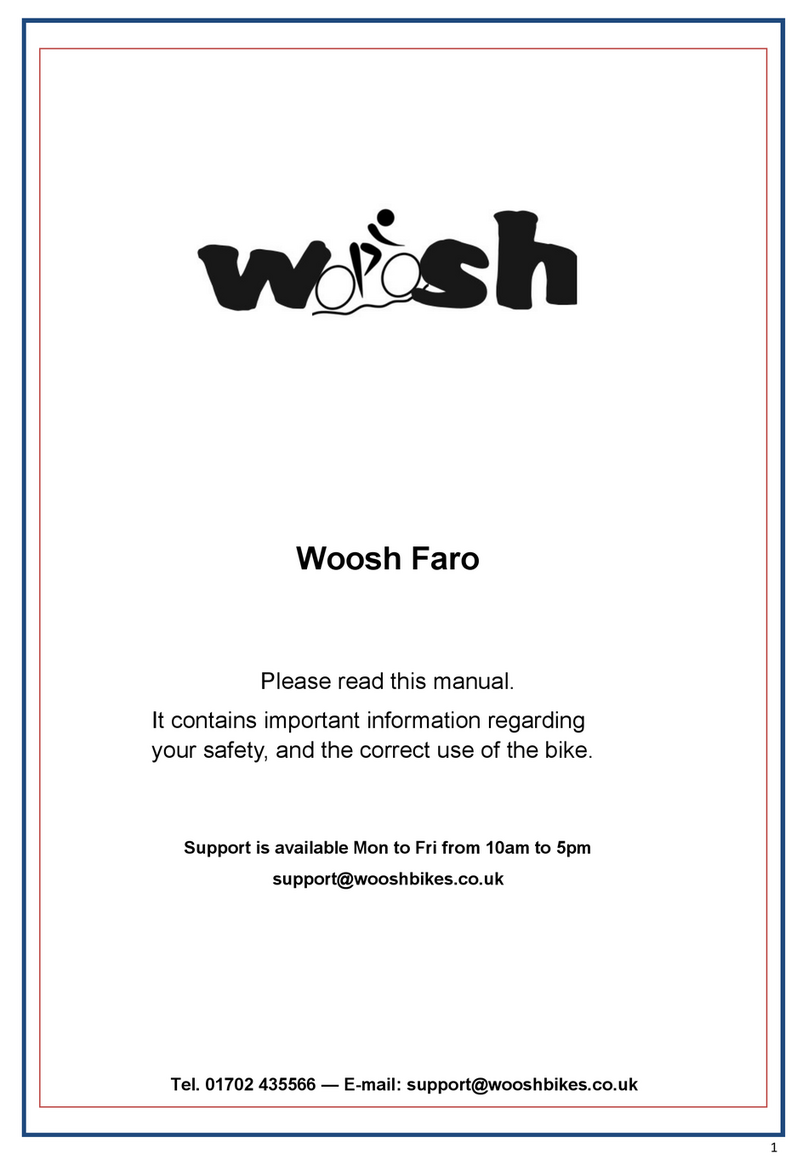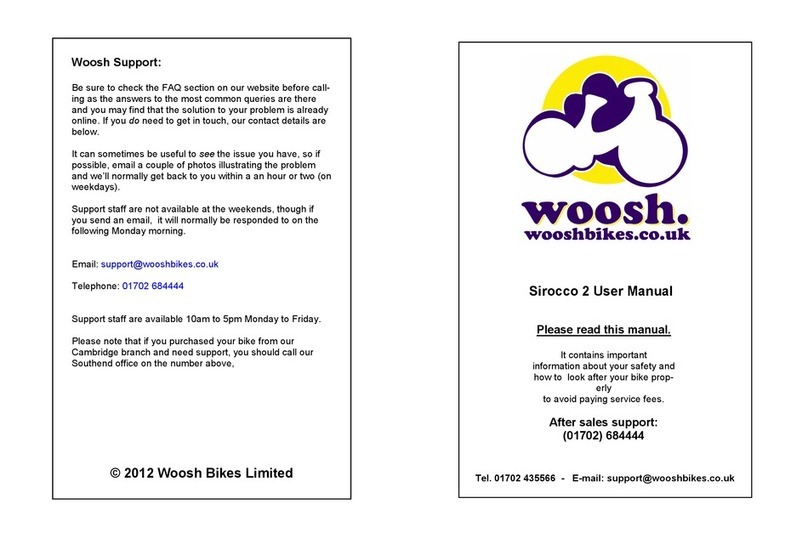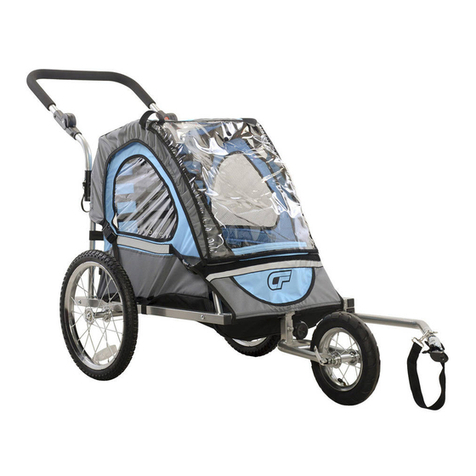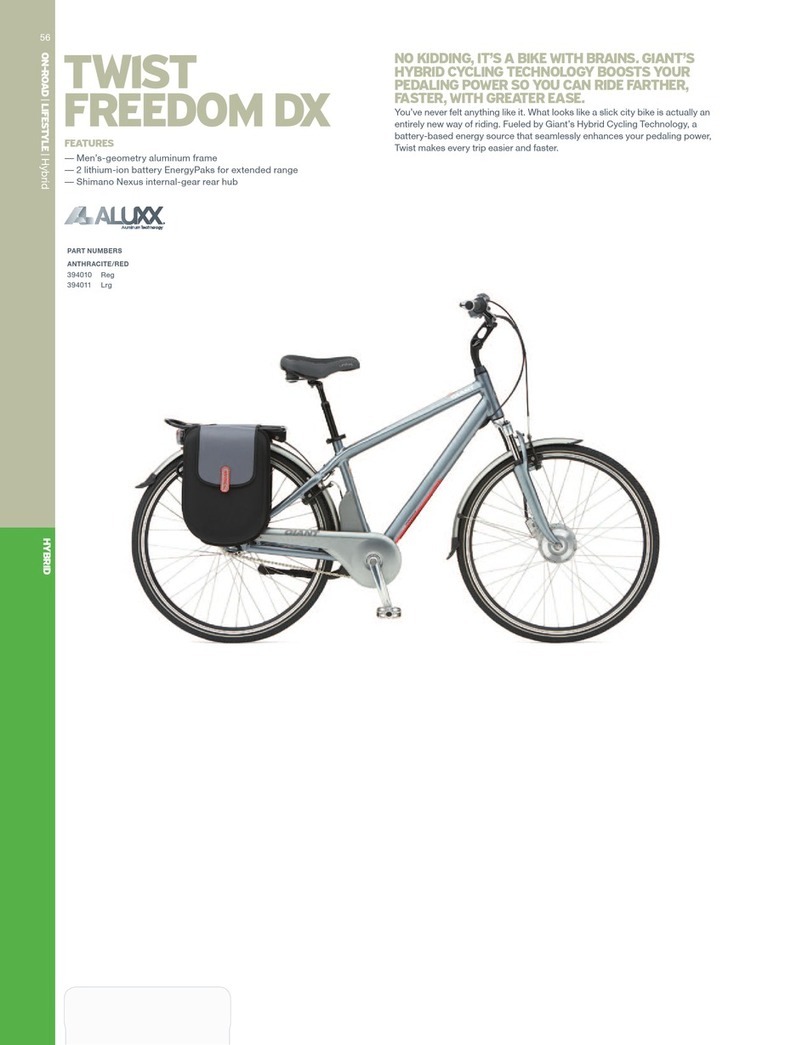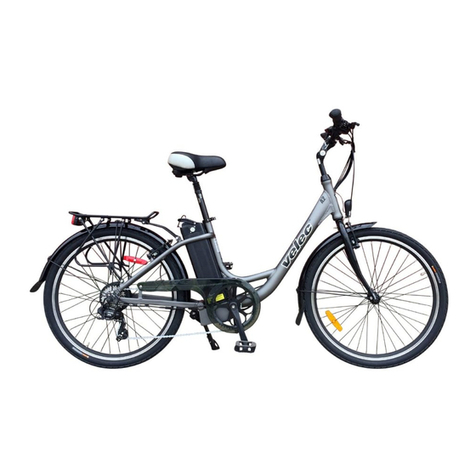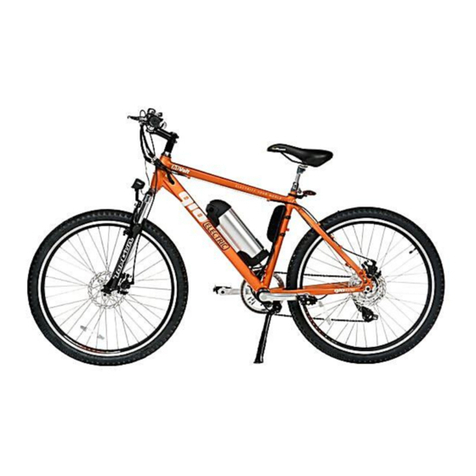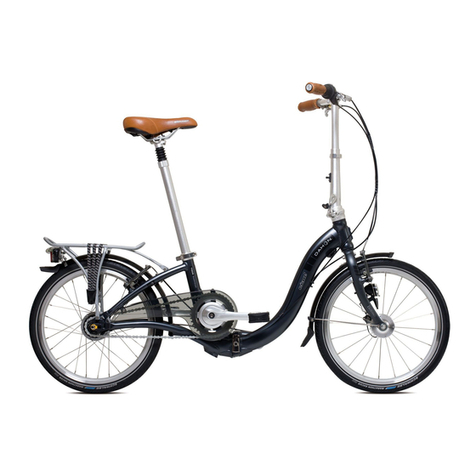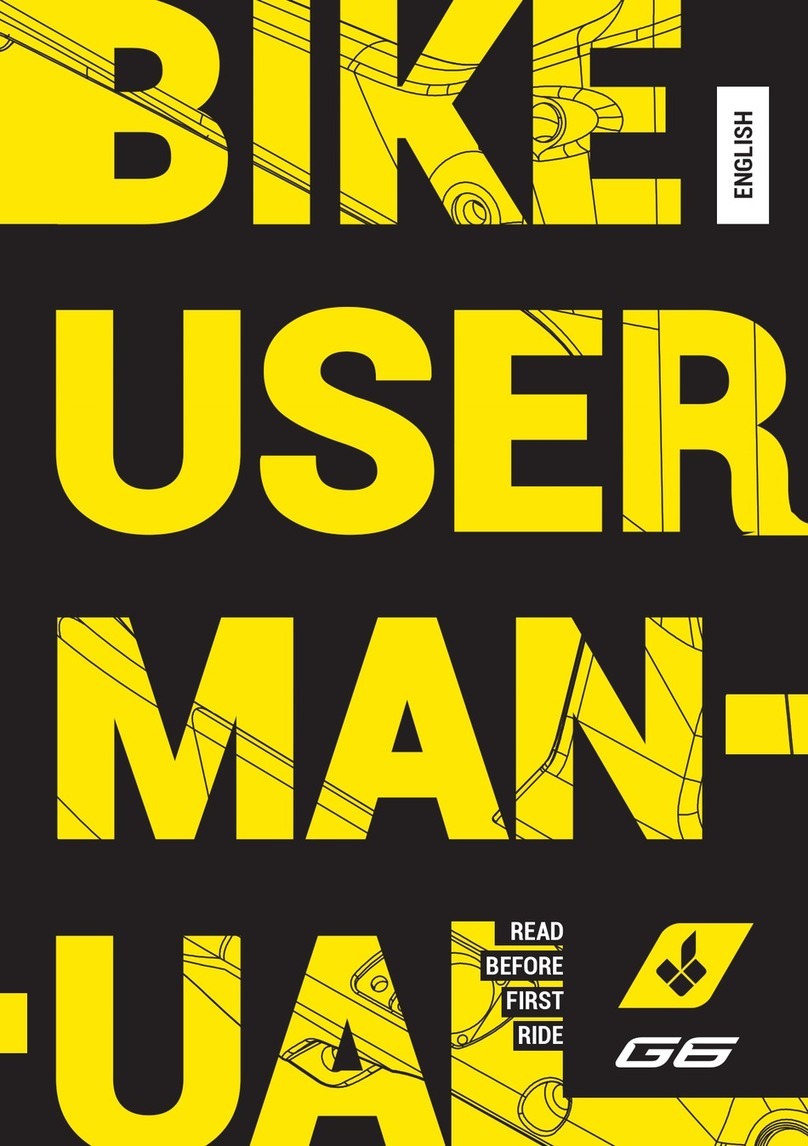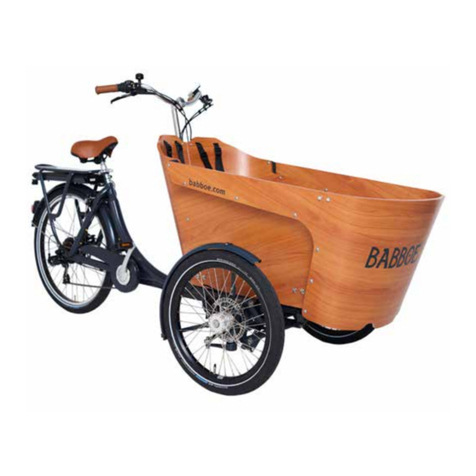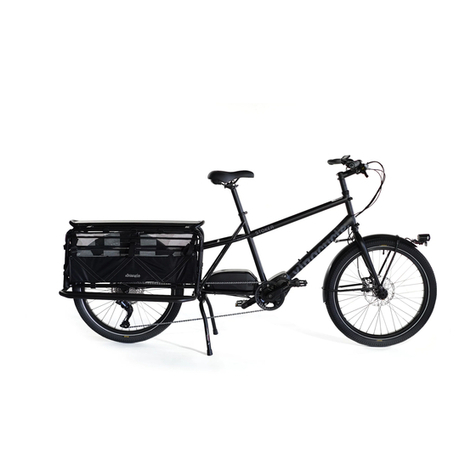Essential extra steps that must be taken before riding
the bike for the first time (and also regularly thereafter):
All items on the bi e should be double chec ed to ensure
that all parts are correctly fitted and that all the nuts and bolts
are as tight as they should be. This step should be repeated
after one wee of use, and then at regular intervals and
every one to two wee s thereafter.
The tyres need to chec ed/pumped up. The pressure range
is between 40 to 65 psi depending on the weight of the user.
It is essential that the tyres are regularly chec ed - again,
every one to two wee s—to ensure that the pressures are
correct. Failure to do so will shorten the life of your bi e and
will cause additional stress to the components of the bi e.
Due to the heavy weight exerted on the rear wheel of the
bike by the battery and the motor (5 times more than on
a standard bike wheel), both wheels and all spokes
must be he ked before initial riding and regularly
thereafter . We re ommend every 2 weeks and weekly if
you are a ommuter or high mileage rider. If any spokes
are slightly loose it is essential to tighten them and true
the wheel before riding your bike.
Failure to observe this step could result in complete failure of
the rear wheel and thus possible danger to the rider. The tool
for truing/tightening the spo es can be purchased from most
bi e shops for approx. £3 or from us (please add £1 car-
riage). For details on how to true your wheels, see the sup-
port section of our website at www.wooshbi es.co.u
Alternatively, your local bi e shop will be able to do this for
you for a small charge (not refundable by us).
The bra es need to be chec ed to ensure they are operating
correctly, and if necessary adjusted to ensure optimum
performance.
If you are unsure about how to carry out any of these steps
you should contact your local bi e shop. Their fees will be
payable by you and will not be refunded by us.
Step 1 – Opening the arton.
Keep the carton upright, remove the shipping straps and cut
the tape seals. Remove the wheel from the carton, being
careful not scratch the bi e as you do this. Now lift the bi e
out of the carton and lean it against a sturdy surface/wall. Do
not destroy the carton as it will be required if the bi e needs
to be returned for any reason in the future.
Step 2 – Unpa king
Cut the cable ties and detach the pedals, handlebars and
charger etc. from the bi e, and then remove the remaining
pac aging materials.
Once the pac aging has been removed, undo the bolts that
hold the handle-bar clamp in place and remove the clamp.
Line up the handle-bars and then replace the clamp to se-
cure the handle-bars in place. There is a ribbed section on
the handle-bars, this should sit centrally within the brac et.




